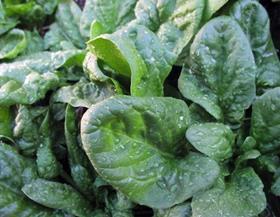
Spinach can be used to detect bombs, research published in the Nature Materials science journal has revealed.
Darpa, the organisation funding military science in the US, had been trying to genetically engineer a plant that would wilt when exposed to explosives, when a team of scientists at Massachusetts Institute of Technology (MIT) discovered that an existing plant – spinach – already does just that.
Technology has been developed, which allows fluorescent nanoparticles to be absorbed into spinach leaves, and if explosives are detected in the plant’s water supply, it wilts and authorities are alerted.
“Not many engineers are looking at plants in this way,” said Michael Strano from MIT, The Times reported.
But according to the professor of chemical engineering, they are superior to man-made sensors. Firstly, they are less likely to be spotted by terrorists, and secondly, they have “built-in power sources” and are able to “move fluids around very efficiently”, The Times reported.
Strano added: “They self-repair, are cheap and abundant, are naturally adapted to survive outdoors and have a negative carbon footprint.'
MIT conducted the research by applying ink containing two types of nanoparticles to spinach leaves. One of these particles shone when exposed to light, triggering a signal that could be picked up by a phone.
If explosive chemicals leaked into the plant’s water supply, however, they were drawn into the leaves and bonded with the second type of particles, which changed the frequency of light.
Using technology like this, Strano believes plants can be used for a range of different applications – to monitor groundwater levels around chemical or nuclear plants; to protect the public from terrorist attacks; or to improve crop yields, by ascertaining whether they are being attacked by pests, forecasting drought and spotting changes in environmental conditions.






No comments yet